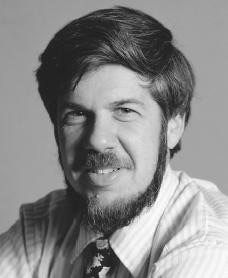
Stephen Jay Gould was an American paleontologist, evolutionary biologist, and historian of science. He was one of the most influential and widely read authors of popular science of his generation. Gould spent most of his career teaching at Harvard University and working at the American Museum of Natural History in New York. In 1996, Gould was hired as the Vincent Astor Visiting Research Professor of Biology at New York University, after which he divided his time teaching between there and Harvard.
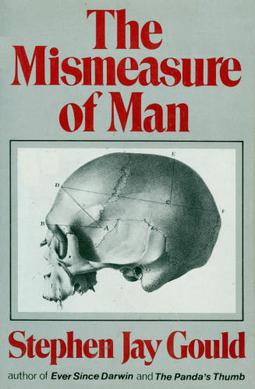
The Mismeasure of Man is a 1981 book by paleontologist Stephen Jay Gould. The book is both a history and critique of the statistical methods and cultural motivations underlying biological determinism, the belief that "the social and economic differences between human groups—primarily races, classes, and sexes—arise from inherited, inborn distinctions and that society, in this sense, is an accurate reflection of biology".

A Devil's Chaplain: Reflections on Hope, Lies, Science, and Love is a 2003 book of selected essays and other writings by Richard Dawkins. Published five years after Dawkins's previous book Unweaving the Rainbow, it contains essays covering subjects including pseudoscience, genetic determinism, memetics, terrorism, religion and creationism. A section of the book is devoted to Dawkins' late adversary Stephen Jay Gould.

"Lies, damned lies, and statistics" is a phrase describing the persuasive power of statistics to bolster weak arguments, "one of the best, and best-known" critiques of applied statistics. It is also sometimes colloquially used to doubt statistics used to prove an opponent's point.
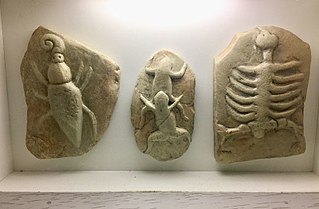
Beringer's Lying Stones are pieces of limestone which were carved into the shape of various fictitious animals and "discovered" in 1725 by Johann Bartholomeus Adam Beringer (1667–1740), Dean of the Faculty of Medicine at the University of Würzburg. Beringer believed them to be fossils, and because some of them bore the name of God in Hebrew, suggested that they might be of divine origin. The scientific community at the time was still unsure as to what fossils actually were, the notion that they were the petrified remains of once-living organisms being merely one of several competing hypotheses.
The year 1726 in science and technology involved some significant events.

Wonderful Life: The Burgess Shale and the Nature of History is a 1989 book on the evolution of Cambrian fauna by Harvard paleontologist Stephen Jay Gould. The volume made The New York Times Best Seller list, was the 1991 winner of the Royal Society's Rhone-Poulenc Prize, the American Historical Association's Forkosch Award, and was a 1991 finalist for the Pulitzer Prize. Pulitzer juror Joyce Carol Oates later revealed the non-fiction jury had unanimously recommended the book for the prize, but the selection was rejected by the Pulitzer board. Gould described his later book Full House (1996) as a companion volume to Wonderful Life.

Young Mr. Lincoln is a 1939 American biographical drama western film about the early life of President Abraham Lincoln, directed by John Ford and starring Henry Fonda. Ford and producer Darryl F. Zanuck fought for control of the film, to the point where Ford destroyed unwanted takes for fear the studio would use them in the film. Screenwriter Lamar Trotti was nominated for an Academy Award for Best Writing/Original Story.
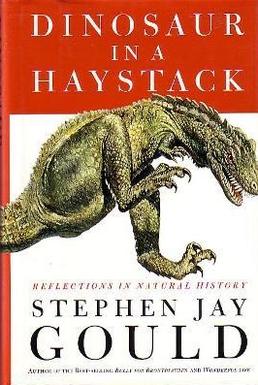
Dinosaur in a Haystack is a 1995 book by the paleontologist Stephen Jay Gould. It collects essays culled from Gould's monthly column "The View of Life" published in Natural History magazine, which Gould contributed for 27 years. The book deals with themes familiar to Gould's writing: evolution, science biography, probabilities, and strange oddities found in nature.
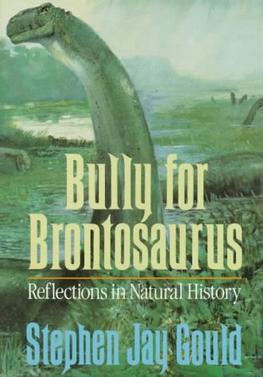
Bully for Brontosaurus (1991) is the fifth volume of collected essays by the Harvard paleontologist Stephen Jay Gould. The essays were culled from his monthly column "This View of Life" in Natural History magazine, to which Gould contributed for 27 years. The book deals, in typically discursive fashion, with themes familiar to Gould's writing: evolution and its teaching, science biography, and probabilities.
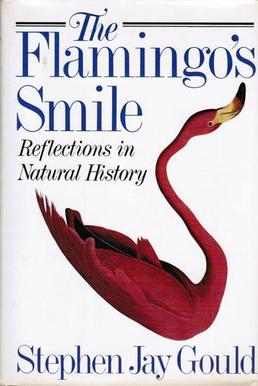
The Flamingo's Smile: Reflections in Natural History, published in 1985, is the fourth volume of collected essays from evolutionary biologist and well-known science writer Stephen Jay Gould.
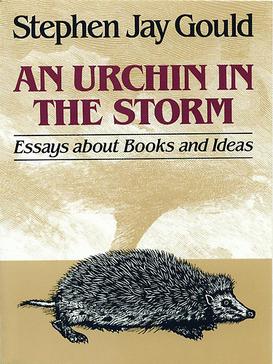
An Urchin in the Storm is a 1987 essay collection from paleontologist and science writer Stephen Jay Gould.

Eight Little Piggies (1993) is the sixth volume of collected essays by the Harvard paleontologist Stephen Jay Gould. The essays were selected from his monthly column "The View of Life" in Natural History magazine, to which Gould contributed for 27 years. The book covers topics that are common to Gould's writing in a discursive manner, including evolution and its teaching, science biography, probabilities, and common sense.
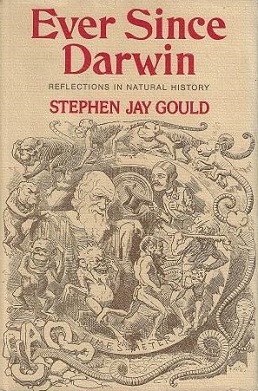
Ever Since Darwin is a 1977 book by the paleontologist Stephen Jay Gould. Gould's first book of collected essays, it originated from his monthly column "This View of Life," published in Natural History magazine. Edwin Barber—who was then the editorial director for W. W. Norton & Company— encouraged Gould to produce a book. He soon commissioned Gould to write The Mismeasure of Man, but it was not until three years later, when Gould accumulated 33 columns, that it occurred to either of them that the Natural History columns should be published in a single volume. The collection of essays, written between 1973–1977, became a best-seller and propelled Gould to national prominence.
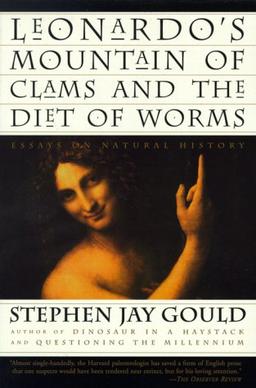
Leonardo's Mountain of Clams and the Diet of Worms (1998) is the eighth volume of collected essays by the Harvard paleontologist Stephen Jay Gould. This collection focuses on what Gould calls "humanistic natural history".

Hen's Teeth and Horse's Toes (1983) is Stephen Jay Gould's third volume of collected essays reprinted from his monthly columns for Natural History magazine titled "This View of Life".

I Have Landed (2002) is the 10th and final volume of collected essays by the Harvard paleontologist Stephen Jay Gould. The essays were culled from his monthly column "This View of Life" in Natural History magazine, to which Gould contributed for 27 years. The book deals, in typically discursive fashion, with themes familiar to Gould's writing: evolution and its teaching, science biography, probabilities and common sense.

Rocks of Ages: Science and Religion in the Fullness of Life is a 1999 book about the relationship between science and religion by the Harvard paleontologist Stephen Jay Gould. First published by Ballantine Books, it was reprinted by Vintage Books. The book is a volume in the series, The Library of Contemporary Thought.

Henry Ernest Gee is a British paleontologist, evolutionary biologist and senior editor of the scientific journal Nature.
Non-overlapping magisteria (NOMA) is the view, advocated by paleontologist Stephen Jay Gould, that science and religion each represent different areas of inquiry, fact vs. values, so there is a difference between the "nets" over which they have "a legitimate magisterium, or domain of teaching authority", and the two domains do not overlap. He suggests, with examples, that "NOMA enjoys strong and fully explicit support, even from the primary cultural stereotypes of hard-line traditionalism" and that it is "a sound position of general consensus, established by long struggle among people of goodwill in both magisteria." Some have criticized the idea or suggested limitations to it, and there continues to be disagreement over where the boundaries between the two magisteria should be.

















